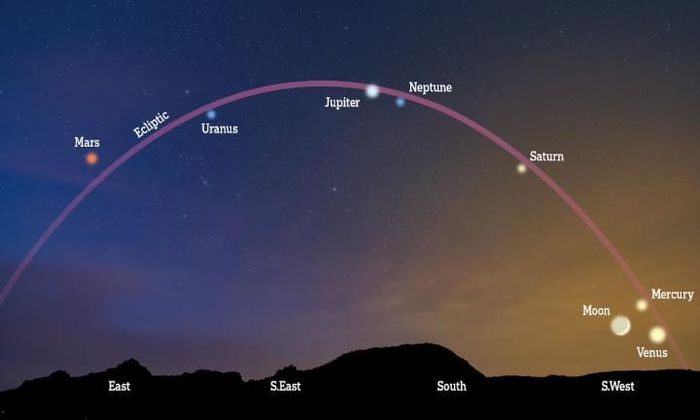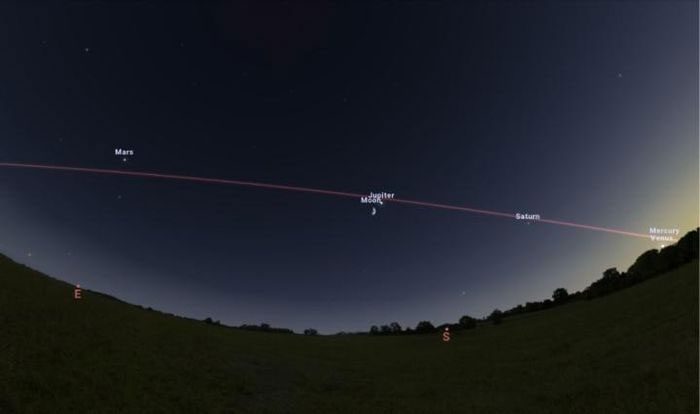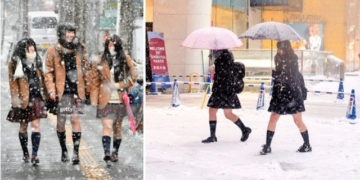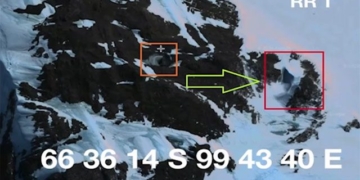Star enthusiasts around the world recently witnessed a remarkable event as all seven planets of the Solar System appeared simultaneously in the night sky.
According to Daily Mail, this astronomical event will last until the end of this week. From certain vantage points, you can observe the planets in the night sky with the naked eye. You can directly see Venus, Mercury, Saturn, Jupiter, and Mars by looking towards the southwest horizon and gazing eastward.
However, Uranus, located between Mars and Jupiter, and Neptune, situated between Saturn and Jupiter, can only be observed with a telescope.
If you observe this phenomenon from the Arctic, explorers will be able to see all seven planets, but their light will be dimmer compared to other locations in the Northern Hemisphere.

The order of the planets that we can observe after sunset from the southwest horizon to the east. (Photo: Daily Mail).
Mercury is the hardest planet to see because it lies in the bright region of the horizon. If you can spot Venus, you can easily find Mercury (about 1.5 degrees to the west) as they are close together when viewed with the naked eye in the night sky. However, the time to observe all seven planets in the night sky is limited due to their distances from each other.
The remaining five planets are all positioned to the east of the horizon. Jupiter is the most recognizable as it shines brighter than the other stars in the sky. However, by midnight, it will also disappear.
Among the seven planets, only Mars can be clearly observed all night right after sunset.
From the eastern horizon, Mars will appear red and brighter than most stars, while its neighbor Saturn will shine yellow when it appears in the southwest after nightfall.
The ringed planets can be observed starting from 3 AM each day.

Five planets visible to the naked eye in the night sky (from right to left): Venus, Mercury, Saturn, Jupiter, and Mars. (Photo: Stellarium)
In addition to the seven planets, the Moon will also appear in the night sky tonight, December 29, as a crescent and situated between Jupiter and Saturn.
According to astronomer Gianluca Masi from the Virtual Telescope Project, astronomy enthusiasts can observe all seven planets of the Solar System every evening until December 31, after sunset. Although this phenomenon occurs regularly, it remains a unique experience.
Most planets orbiting the Sun have nearly circular orbits and their orbital planes are closely aligned, known as the ecliptic plane. However, they are not as close to each other as they appear in the night sky; each planet is usually millions of kilometers apart.
The last time all the planets could be observed simultaneously in the night sky was in June. The five planets visible to the naked eye appeared in order of their distance from the Sun.





















































